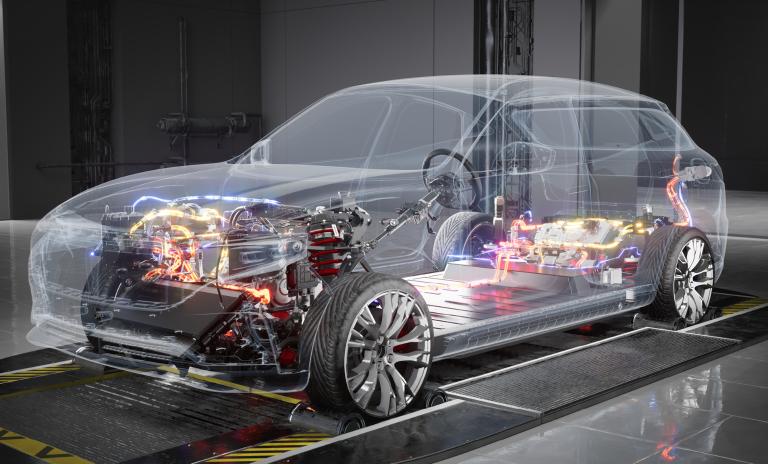The automotive world is experiencing unprecedented change. By 2040 the industry will be polarized, automated, connected and electrified – or PACE, for short.




What does an automotive world that is Polarized, Automated, Connected and Electrified hold in store for suppliers? We believe that the industry will see fundamental structural change in the period to 2040, putting pressure on all types of suppliers to make adjustments. How great that pressure is and when exactly it will be at its strongest will depend on the specific component domain in which the supplier operates, their position in the value chain and their geographical focus. Suppliers will therefore need great strategic foresight and adaptability in order to remain competitive – and to capture opportunities wherever they may arise.
We expect the global component market to grow by around 3.4 percent a year in the period to 2040. However, growth will no longer be driven by a continuous volume increase in traditional domains. We can categorize market segments into three different types:
From a regional perspective, a major shift away from Western markets, Japan and Korea is likely; these regions will account for less than 30 percent of global component value pool growth in 2040. At the same time, China and the Global South will benefit from a combination of production volume growth and higher content per vehicle. Indeed, by 2040 the Global South is expected to be the largest remaining market for ICEs.
The next decade and a half will bring a number of changes directly affecting suppliers. First, suppliers will benefit from new sourcing behavior by OEMs. Many OEMs will increase their insourcing in the short term to leverage technology-driven differentiation, especially in fast-growing domains such as BEV HV batteries, the BEV powertrain and E/E systems. However, we expect this trend to peak before the end of the current decade as technological maturity increases, after which many may choose to rely once again on scale, standardization and the resulting cost advantages by sourcing through suppliers. This development will give an extra boost to suppliers best positioned to tap into this fresh opportunity.
Second, it is likely that growing system complexity will speed up market consolidation. Today's Tier-1 supplier landscape is fragmented and in the period to 2040 we expect to see a strong acceleration of ongoing consolidation, as scale increasingly becomes the winning factor in a highly competitive market. This will be driven by OEMs' preference for sourcing from a few large system suppliers so as to reduce complexity and costs.
Third, we already see established technology players from other industries entering automotive component domains, investing heavily in building expertise and expanding their market share. In some cases, these new entrants may force existing suppliers out of the market.
Suppliers therefore need to engage in strategic thinking. Players operating in contracting market segments will need to balance the growing pressure to consolidate with securing sufficient supply for their customers. To some extent this will remain true even beyond 2040, although we believe that only a few suppliers will make it through to 2040 and beyond. Winning strategies potentially include building a regional portfolio accounting for different BEV trajectories, focusing on continuous performance improvement, pursuing partnerships or M&A, and divesting early in areas where success is at risk or initiating a structured wind-up process.
Many traditional suppliers operating in stagnating segments already suffer from low profitability and should expect to see more pressure going forward. Traditional business models in these stagnating segments will likely no longer be viable in 2040. A paradigm shift will occur in how suppliers and automotive manufacturers interact, possibly with much closer collaboration between OEMs and a few suppliers closely tied to them, as we see for instance in the Japanese market today.
Finally, of the suppliers working in growing segments, battery cell suppliers may be able to continue with their current business model. For E/E and software players, on the other hand, the next few years will be critical: The growth phase will only leave room for a small number of larger players that can afford the huge upfront investments needed to build technology leadership. Given growing competition from new players, we expect that only a few traditional automotive players active in E/E and software will be successful in the long run.
Register now to access our “Automotive 2040: Suppliers” spotlight topic and delve into automotive suppliers adapting to electrification and connectivity advancements. Furthermore, you will automatically receive our spotlight topics and regular news.
